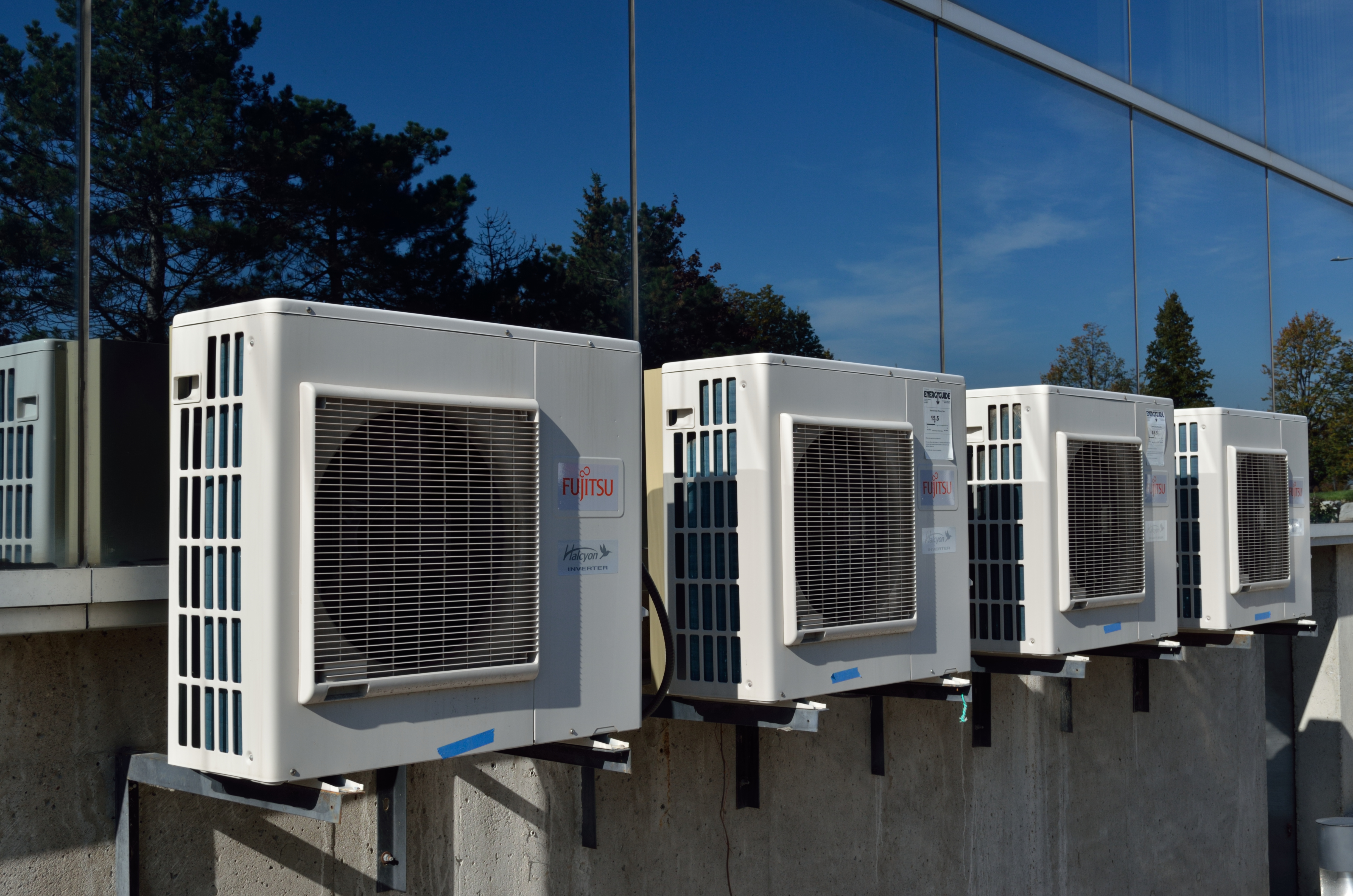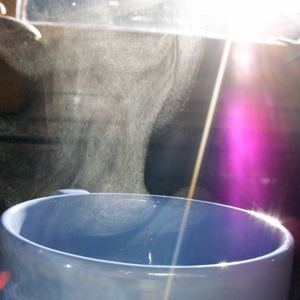|
Evaporator
An evaporator is a type of heat exchanger device that facilitates evaporation by utilizing conductive and convective heat transfer, which provides the necessary thermal energy for phase transition from liquid to vapour. Within evaporators, a circulating liquid is exposed to an atmospheric or reduced pressure environment causing it to boil at a lower temperature compared to normal atmospheric boiling. The four main components of an Evaporator (marine), evaporator assembly are: Heat is transferred to the liquid inside the tube walls via conduction providing the thermal energy needed for evaporation. Convection, Convective currents inside it also contribute to heat transfer efficiency. There are various evaporator designs suitable for different applications including shell and tube, plate, and flooded evaporators, commonly used in industrial processes such as desalination, power generation and air conditioning. Plate-type evaporators offer compactness while multi-stage designs ena ... [...More Info...] [...Related Items...] OR: [Wikipedia] [Google] [Baidu] |
Climbing And Falling Film Plate Evaporator
A climbing/falling film plate evaporator is a specialized type of evaporator in which a thin film of liquid is passed over a rising and falling plate to allow the evaporation process to occur. It is an extension of the falling film evaporator, and has application in any field where the liquid to be evaporated cannot withstand extended exposure to high temperatures, such as the concentration of fruit juices. Design The basic design of the climbing/falling film plate evaporator consists of two phases. In the climbing phase, the liquid feed is heated by a flow of steam as it rises through a corrugated plate. In the subsequent falling phase, the liquid flows downward at high velocity under gravitational force. Evaporation and cooling occurs rapidly in the falling phase. There are several design variations that are commonly used in industrial field. These include single-effect and multiple-effect evaporators. The choice of evaporator design is dictated by constraints of the process. ... [...More Info...] [...Related Items...] OR: [Wikipedia] [Google] [Baidu] |
Evaporator (marine)
An evaporator, distiller or distilling apparatus is a piece of ship's equipment used to produce fresh drinking water from sea water by distillation. As fresh water is bulky, may spoil in storage, and is an essential supply for any long voyage, the ability to produce more fresh water in mid-ocean is important for any ship. Early evaporators on sailing vessels Although distillers are often associated with steam ships, their use pre-dates this. Obtaining fresh water from seawater is a theoretically simple system that, in practice, presented many difficulties. While there are numerous effective methods today, early desalination efforts had low yields and often could not produce potable water. At first, only larger warships and some exploratory ships were fitted with distilling apparatus: a warship's large crew naturally needed a large supply of water, more than they could stow on board in advance. Cargo ships, with their smaller crews, merely carried their supplies with them. A se ... [...More Info...] [...Related Items...] OR: [Wikipedia] [Google] [Baidu] |
Multiple-effect Evaporator
In chemical engineering, a multiple-effect evaporator is an apparatus for efficiently using the heat from steam to evaporate water. Water is boiled in a sequence of vessels, each held at a lower pressure than the last. Because the boiling temperature of water decreases as pressure decreases, the vapor boiled off in one vessel can be used to heat the next, and only the first vessel (at the highest pressure) requires an external source of heat. The multiple-effect evaporator was invented by the American ( Louisiana Creole) engineer Norbert Rillieux. Although he may have designed the apparatus during the 1820s and constructed a prototype in 1834, he did not build the first industrially practical evaporator until 1845. Originally designed for concentrating sugar in sugar cane juice, it has since become widely used in all industrial applications where large volumes of water must be evaporated, such as salt production and water desalination. Multiple-effect evaporation comm ... [...More Info...] [...Related Items...] OR: [Wikipedia] [Google] [Baidu] |
Refrigerator
A refrigerator, commonly shortened to fridge, is a commercial and home appliance consisting of a thermal insulation, thermally insulated compartment and a heat pump (mechanical, electronic or chemical) that transfers heat from its inside to its external environment so that its inside is cooled to a temperature below the room temperature. Refrigeration is an essential Food preservation, food storage technique around the world. The low temperature reduces the reproduction rate of bacteria, so the refrigerator lowers the rate of Food spoilage, spoilage. A refrigerator maintains a temperature a few degrees above the freezing point of water. The optimal temperature range for perishable food storage is .Keep your fridge-freezer clean and ice-free ''BBC''. 30 April 2008 A freezer is a specialized refrigerator, or portion of a refrigerator, that maintains its contents’ temperature below the freezing point of water. The refrigerator replaced the icebox, which had been a common househ ... [...More Info...] [...Related Items...] OR: [Wikipedia] [Google] [Baidu] |
Air Conditioner
Air conditioning, often abbreviated as A/C (US) or air con (UK), is the process of removing heat from an enclosed space to achieve a more comfortable interior temperature, and in some cases, also controlling the humidity of internal air. Air conditioning can be achieved using a mechanical 'air conditioner' or through other methods, such as passive cooling and ventilative cooling. Air conditioning is a member of a family of systems and techniques that provide heating, ventilation, and air conditioning (HVAC). Heat pumps are similar in many ways to air conditioners but use a reversing valve, allowing them to both heat and cool an enclosed space. Air conditioners, which typically use vapor-compression refrigeration, range in size from small units used in vehicles or single rooms to massive units that can cool large buildings. Air source heat pumps, which can be used for heating as well as cooling, are becoming increasingly common in cooler climates. Air conditioners can red ... [...More Info...] [...Related Items...] OR: [Wikipedia] [Google] [Baidu] |
Heat Exchanger
A heat exchanger is a system used to transfer heat between a source and a working fluid. Heat exchangers are used in both cooling and heating processes. The fluids may be separated by a solid wall to prevent mixing or they may be in direct contact. They are widely used in space heating, refrigeration, air conditioning, power stations, chemical plants, Petrochemical, petrochemical plants, Oil refinery, petroleum refineries, natural-gas processing, and sewage treatment. The classic example of a heat exchanger is found in an internal combustion engine in which a circulating fluid known as engine coolant flows through radiator coils and air flows past the coils, which cools the coolant and heats the incoming air. Another example is the heat sink, which is a passive heat exchanger that transfers the heat generated by an electronic or a mechanical device to a fluid medium, often air or a liquid coolant. Flow arrangement There are three primary classifications of heat exchangers accord ... [...More Info...] [...Related Items...] OR: [Wikipedia] [Google] [Baidu] |
Distillation
Distillation, also classical distillation, is the process of separating the component substances of a liquid mixture of two or more chemically discrete substances; the separation process is realized by way of the selective boiling of the mixture and the condensation of the vapors in a still. Distillation can operate over a wide range of pressures from 0.14 bar (e.g., ethylbenzene/ styrene) to nearly 21 bar (e.g., propylene/propane) and is capable of separating feeds with high volumetric flowrates and various components that cover a range of relative volatilities from only 1.17 ( o-xylene/ m-xylene) to 81.2 (water/ ethylene glycol). Distillation provides a convenient and time-tested solution to separate a diversity of chemicals in a continuous manner with high purity. However, distillation has an enormous environmental footprint, resulting in the consumption of approximately 25% of all industrial energy use. The key issue is that distillation operates based on phase changes, ... [...More Info...] [...Related Items...] OR: [Wikipedia] [Google] [Baidu] |
Evaporation
Evaporation is a type of vaporization that occurs on the Interface (chemistry), surface of a liquid as it changes into the gas phase. A high concentration of the evaporating substance in the surrounding gas significantly slows down evaporation, such as when humidity affects rate of evaporation of water. When the molecules of the liquid collide, they transfer energy to each other based on how they collide. When a molecule near the surface absorbs enough energy to overcome the vapor pressure, it will escape and enter the surrounding air as a gas. When evaporation occurs, the energy removed from the vaporized liquid will reduce the temperature of the liquid, resulting in evaporative cooling. On average, only a fraction of the molecules in a liquid have enough heat energy to escape from the liquid. The evaporation will continue until an equilibrium is reached when the evaporation of the liquid is equal to its condensation. In an enclosed environment, a liquid will evaporate unt ... [...More Info...] [...Related Items...] OR: [Wikipedia] [Google] [Baidu] |
Salinometer
A salinometer is a device designed to measure the salinity, or dissolved salt content, of a solution. Since the salinity affects both the electrical conductivity and the specific gravity of a solution, a salinometer often consist of an ec meter or hydrometer and some means of converting those readings to a salinity reading. A salinometer may be calibrated in either micromhos, a unit of electrical conductivity, (usually 0-22) or else directly calibrated for salt in 'grains per gallon' (0-0.5). A typical reading on-board ship would be 2 micromhos or 0.05 grains per gallon. A reading of twice this may trigger a warning light or alarm. Applications Fresh water generators (Evaporators) use salinometers on the distillate discharge in order to gauge the quality of the water. Water from the evaporator can be destined for potable water supplies, so salty water is not desirable for human consumption. In some ships, extremely high quality distillate is required for use in water-tube boi ... [...More Info...] [...Related Items...] OR: [Wikipedia] [Google] [Baidu] |
Desalination
Desalination is a process that removes mineral components from saline water. More generally, desalination is the removal of salts and minerals from a substance. One example is Soil salinity control, soil desalination. This is important for agriculture. It is possible to desalinate saltwater, especially Seawater, sea water, to produce water for human consumption or irrigation. The by-product of the desalination process is brine. Many seagoing ships and submarines use desalination. Modern interest in desalination mostly focuses on cost-effective provision of fresh water for human use. Along with recycled wastewater, it is one of the few water resources independent of rainfall. Due to its energy consumption, desalinating sea water is generally more costly than fresh water from surface water or groundwater, Reclaimed water, water recycling and water conservation; however, these alternatives are not always available and depletion of reserves is a critical problem worldwide. Desalinati ... [...More Info...] [...Related Items...] OR: [Wikipedia] [Google] [Baidu] |
Condenser (heat Transfer)
In systems involving heat transfer, a condenser is a heat exchanger used to Condensation, condense a gaseous substance into a liquid state through cooling. In doing so, the latent heat is released by the substance and transferred to the surrounding environment. Condensers are used for efficient heat rejection in many industrial systems. Condensers can be made according to numerous designs and come in many sizes ranging from rather small (hand-held) to very large (industrial-scale units used in plant processes). For example, a refrigerator uses a condenser to get rid of heat extracted from the interior of the unit to the outside air. Condensers are used in air conditioning, industrial chemical processes such as distillation, steam power plants, and other heat-exchange systems. The use of cooling water or surrounding air as the coolant is common in many condensers. History The earliest laboratory condenser, a "Heat exchanger, Gegenstromkühler" (counter-flow condenser), was inven ... [...More Info...] [...Related Items...] OR: [Wikipedia] [Google] [Baidu] |






